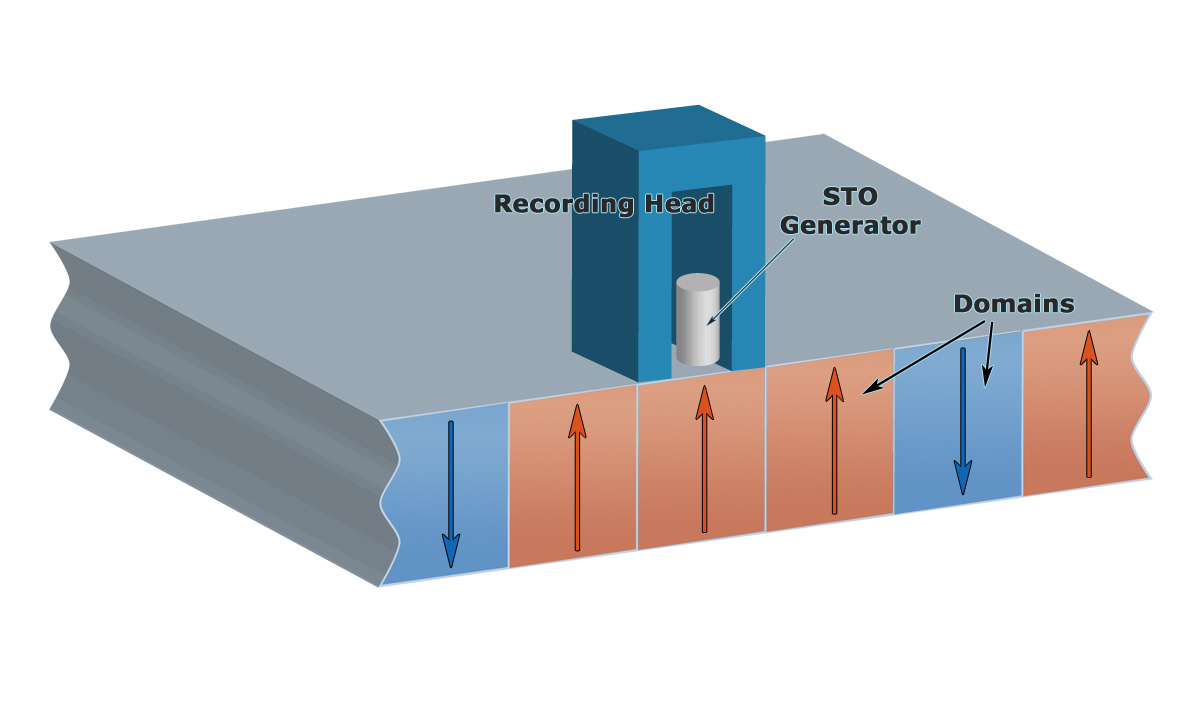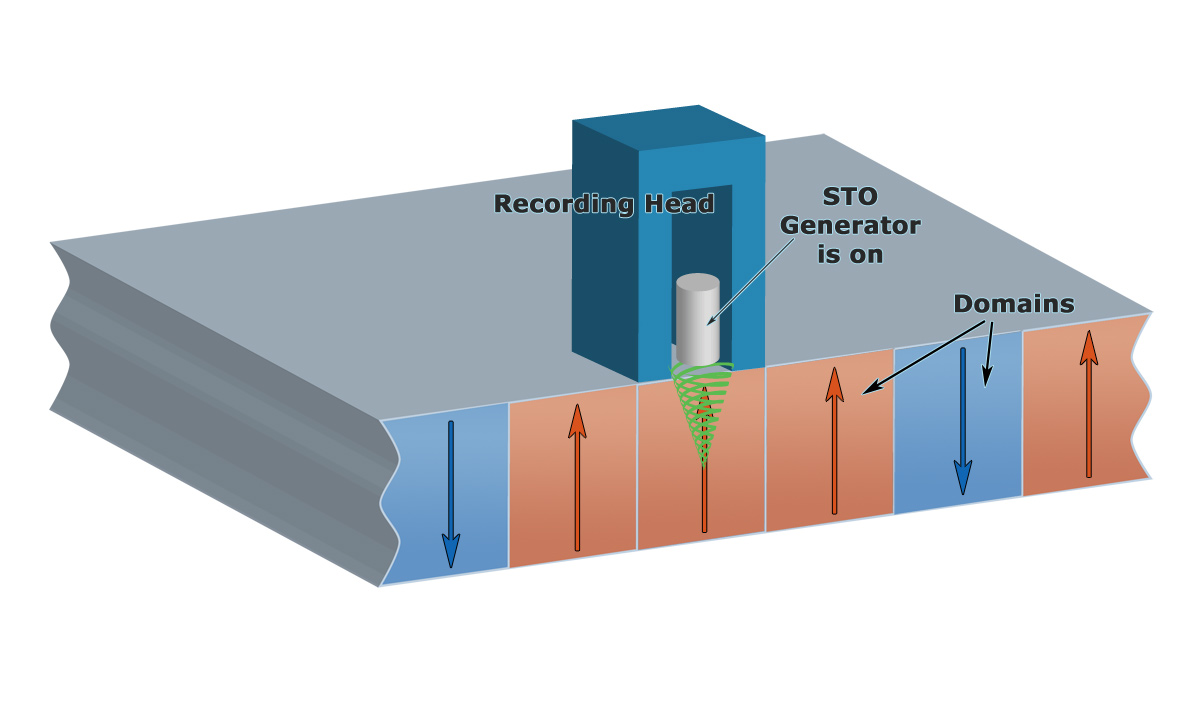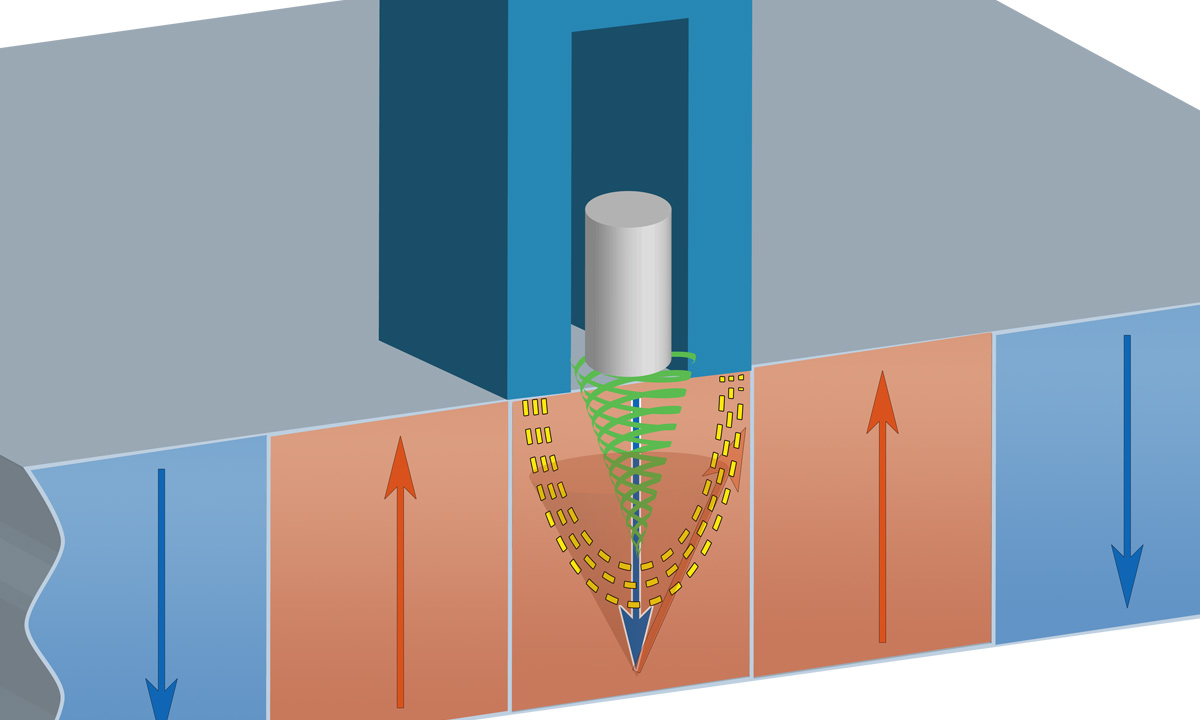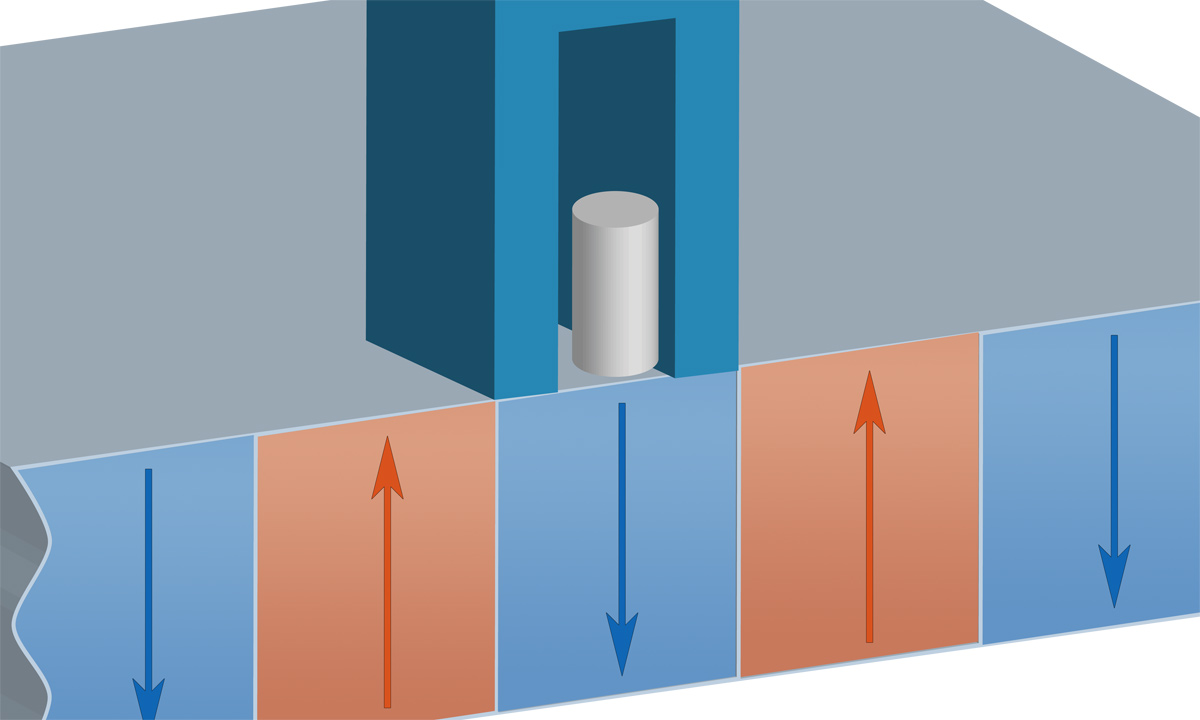This year is promised to be the year when MAMR technology becomes a reality. This technology should increase the recording density up to 4Tbit per square inch, which in theory would allow hard drive manufacturers to create a 40TB HDD.
The problem of perpendicular magnetic recording
Since the creation of the HDD, the recording density of drives has doubled every year and continued to do so until 2010, when the growth in recording density began to slow down. This happened due to the fact that perpendicular magnetic recording (PMR) has begun to approach its theoretical limit of 1 TB per square inch.
The limitation for PMR is associated with the influence of the superparamagnetic effect, when a decrease in the physical dimensions of magnetic domains (one magnetic domain encodes 1 bit of information) in a ferromagnetic substance with a certain coercivity can lead to an unpredictable vector change of the magnetic moment of such domains. In other words, with sufficiently small magnetic domains, such a disk can randomly lose information.
There are two ways to defeat the superparamagnetic effect in the HDD:
- Increase the size of the magnetic domain (i.e., the physical size of the recording head), but this will lead to a drop in the recording density, and hence to a decrease in the total capacity of the HDD
- The second option is to use a magnetic alloy with a greater coercivity, but then the recording energy would have to be more powerful, which would lead to a larger size of the recording head, and therefore an enlargment of the magnetic domains and a decrease in recording density. At least, it was assumed for a long time.
MAMR as a solution to the problem
At one point, some engineers noticed that if a special energy field of a certain frequency is applied to a ferromagnetic substance, then changing the magnetic moment of the magnetic domain would require significantly less energy.
And at that point the idea of the MAMR technology was born. MAMR stands for Microwave-Assisted Magnetic Recording.
MAMR works very peculiarly.
The magnetic moment in ferromagnets is provided by the intrinsic spins of elementary particles in the atoms of the substance. When the spins of the particles inside the magnetic domain are "pointing" to the same direction, a magnetic moment of the domain forms, and it can be detected by the reading head of HDD. The magnetic moment on a PMR HDD can be in one of two "pointing" states, so this can be used for recording binary information.
An important part of MAMR is the Spin Torque Oscillator (STO). STO itself is located in close proximity to the recording head. When current is applied to the STO, spins of electrons inside the STO start to polarize, and the STO generates a circular electromagnetic field with a frequency of 20-40 GHz.
This special electromagnetic field creates a resonance in the ferromagnetic of the platters of MAMR HDD, which leads to the precession of the magnetic moments of the domains in this field. In fact, the magnetic moment deviates from its "normal state" axis and to change its direction (flip it), the recording head would need just a small amount of energy.
I'll try to show how MAMR works on the following pictures.

Let's say the drive is commanded to record some information. First step is to turn STO on.

STO generates circular electromagnetic field and the magnetic moment begins a precession and deviates to the side.

Then the drive sends a pulse of current through the recording head, which causes immediate change in the direction of the magnetic moment in the domain.

Finally STO is off and freshly-written bit of information is stored in the magnetic domain.

Using MAMR technology allows hard drive manufacturers to take ferromagnetic materials with greater coercivity, and it means that it would be possible to reduce the size of magnetic domains without causing a superparamagnetic effect. STO generator helps to reduce the size of the recording head (by reducing the necessary energy in the recording pulse), which makes it possible to record information on smaller magnetic domains, and therefore increases the recording density.
Author: Artem Rubtsov
This article has been written exclusively for hddscan.com
If you would like to publish or reproduce any part of this article on the other Internet recourses you would have to get an agreement signed by the author of this article.

